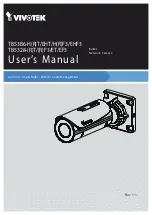
24-port NWay Ethernet Switch User’s Guide
64
Switch Management and Operating Concepts
Because some devices on a network may be tag-unaware, a
decision must be made at each port on a tag-aware device before
packets are transmitted – should the packet to be transmitted
have a tag or not? If the transmitting port is connected to a tag-
unaware device, the packet should be untagged. If the
transmitting port is connected to a tag-aware device, the packet
should be tagged.
Tagging and Untagging
Every port on an 802.1Q compliant switch can be configured as
tagging
or
untagging.
Ports with tagging enabled will put the VID number, priority and
other VLAN information into the header of all packets that flow
into and out of it. If a packet has previously been tagged, the
port will not alter the packet, thus keeping the VLAN
information intact. The VLAN information in the tag can then be
used by other 802.1Q compliant devices on the network to make
packet forwarding decisions.
Ports with untagging enabled will strip the 802.1Q tag from all
packets that flow into and out of those ports. If the packet
doesn’t have an 802.1Q VLAN tag, the port will not alter the
packet. Thus, all packets received by and forwarded by an
untagging port will have no 802.1Q VLAN information.
(Remember that the PVID is only used internally within the
switch). Untagging is used to send packets from an 802.1Q-
compliant network device to a non-compliant network device.
Ingress Filtering
A port on a switch where packets are flowing into the switch and
VLAN decisions must be made is referred to as an
ingress port
.
















































